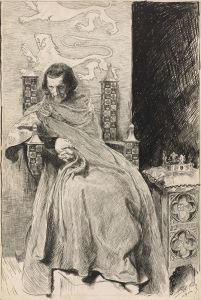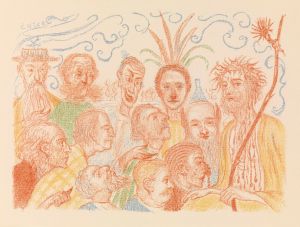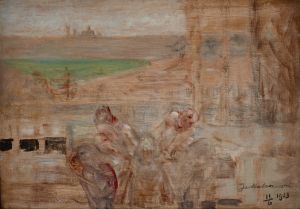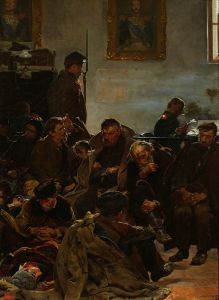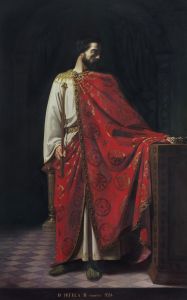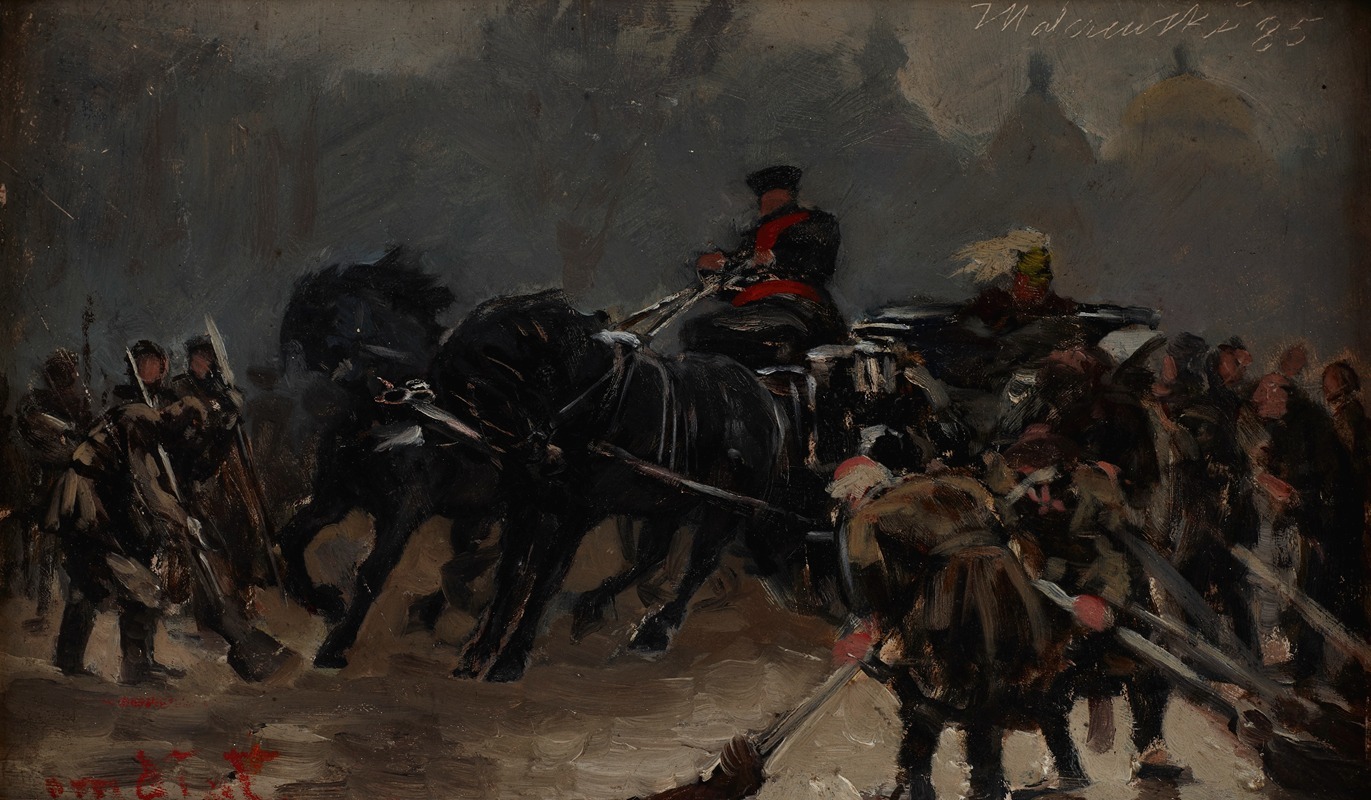
There Comes the Tsar
A hand-painted replica of Jacek Malczewski’s masterpiece There Comes the Tsar, meticulously crafted by professional artists to capture the true essence of the original. Each piece is created with museum-quality canvas and rare mineral pigments, carefully painted by experienced artists with delicate brushstrokes and rich, layered colors to perfectly recreate the texture of the original artwork. Unlike machine-printed reproductions, this hand-painted version brings the painting to life, infused with the artist’s emotions and skill in every stroke. Whether for personal collection or home decoration, it instantly elevates the artistic atmosphere of any space.
Jacek Malczewski, a prominent Polish painter, is known for his symbolic and often allegorical works that reflect the cultural and political climate of Poland during his lifetime. One of his notable paintings is "There Comes the Tsar" (Polish: "Car przychodzi"), which captures the complex emotions and historical context of Poland under foreign rule.
"There Comes the Tsar" was created during a period when Poland was partitioned and under the control of neighboring empires, including Russia. This painting is part of Malczewski's broader body of work that often addresses themes of national identity, resistance, and the struggle for independence. Malczewski, a leading figure in the Young Poland movement, used his art to comment on the socio-political issues of his time, and "There Comes the Tsar" is no exception.
The painting depicts a scene filled with symbolic imagery, characteristic of Malczewski's style. While the exact details of the painting's composition are not widely documented, Malczewski's works typically feature a blend of realism and symbolism, often incorporating historical and mythological references. His paintings frequently include figures that represent Poland, its people, and its struggles, set against backdrops that evoke a sense of historical narrative.
Malczewski's use of symbolism in "There Comes the Tsar" likely serves to critique the presence and influence of the Russian Empire in Poland. The title itself suggests the arrival of the Tsar, a figure representing Russian authority and control. Through his art, Malczewski often conveyed a sense of resistance and resilience, reflecting the sentiments of many Poles who longed for independence and self-determination.
The painting is an example of how Malczewski used his artistic talents to engage with the political discourse of his time. By embedding layers of meaning within his work, he invited viewers to reflect on the historical and cultural context of Poland's situation. His paintings are not just visual representations but are also imbued with a narrative that speaks to the collective consciousness of the Polish people.
Jacek Malczewski's contribution to Polish art and culture is significant, as he played a crucial role in shaping the national identity through his works. "There Comes the Tsar" stands as a testament to his ability to capture the spirit of his nation and its ongoing struggles. His legacy continues to influence Polish art, and his paintings remain a subject of study for their rich symbolism and historical significance.
In summary, "There Comes the Tsar" by Jacek Malczewski is a painting that encapsulates the complex interplay of art, politics, and national identity in Poland during a time of foreign domination. Through his symbolic and allegorical approach, Malczewski provides a poignant commentary on the challenges faced by his country, making his work an enduring piece of Polish cultural heritage.






